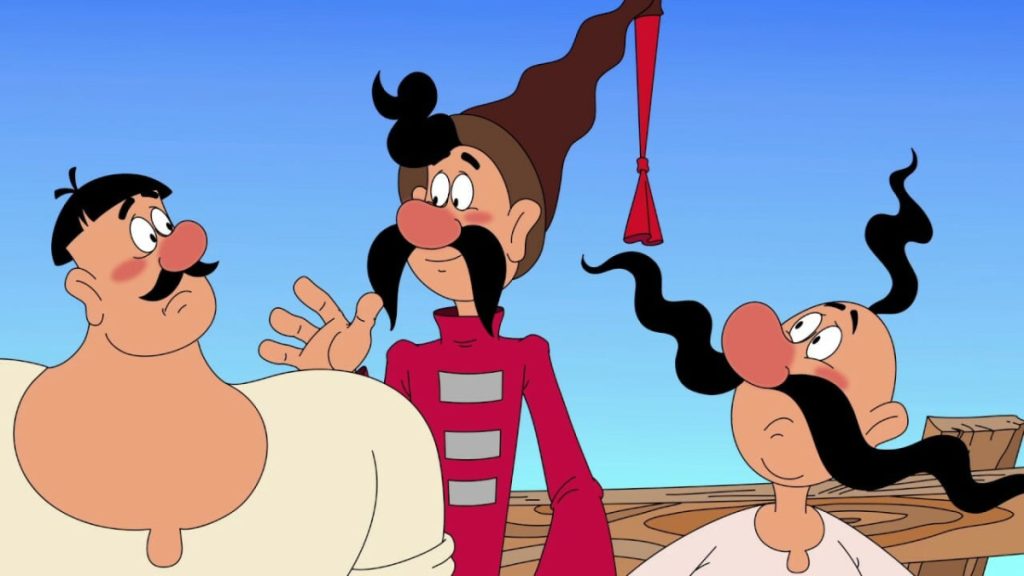
In my previous post, I was talking about the mysterious and crude Ukrainian cinema. This time, I decided to give you a short insight into the history of Ukrainian animation.
Animation as a separate art appeared in Ukraine in the early 20-s. The first animators draw substantial inspiration from folk culture. No surprise that the first reported cartoon (1927) revolved around the plot of a very well-known Ukrainian folk tale, “The Tale of The Straw Bull.” Unfortunately, the film didn’t survive, but judging by the surviving sketches, this masterpiece by Viacheslav Lewandowski was a vivid and expressive iteration of the traditional narrative.
Despite the initial advancements of the media, it was abandoned due to WWII and Holodomor, a mass famine in Ukraine. After the tragic events, during the time of relative stability, in 1934, Ukrainian animators produced the first fully graphic animated film. Around the same time, the first attempts to make an animated show with numerous episodes were made. The artists’ efforts culminated in the show titled “Tuk Tuk and Zhuk”.
Most of these early cartoons were created in studios based in Kyivnauchfilm, a studio specializing in making animations for science films and other educational materials. Even though Ukrainian animation was developing fast, it could not compete with the Moscow school of animators, also known as Soyuzmultfilm. Understanding their technical and financial scrutinies, the Ukrainian animators invested more time and thought in developing cartoons’ aesthetics and concept, rendering them more conceptual and experimental, playing with style and various modes of representation. Meanwhile, Soyuzmultfilm focused on realism and the ‘industry standard’ defined by Disney decades before. Parting with the Disney canon, Ukrainian animators learned from Avant-Garde European animation schools which culminated in the production of numerous animated masterpieces incorporating approaches like combining live-action and animation, transfer technique, as well as conceptually innovative works criticizing religion, and even satirizing the Soviet society.
The true rebirth of the art form happened in 1950 when the renowned Ukrainian animator, Ipolyt Lazarchuk, created his most famous animated show titled “The Cossacks.” A show with a cult following among children, as well as adults, “The Cossacks” depicts the adventures of three cossacks named Grai, Tur, and Oko. They partake in numerous ventures when among many others they enter a football championship, trade salt, and even cook borsht.

The rapid development of the art alarmed the Soviet authorities. Fearing the progressive originality and collaboration with ‘disgraced’ artists and dissidents (such as Tagan’ka Theater, whose actors voiced characters in Ukrainian cartoons), the Soviet censors began banning Ukrainian projects from being financed. They only chose so-called ‘grey’ works that aligned with the interests of the party. Some particularly revolutionary films doomed their artists to home arrests and even internal displacement. Even the legendary “Cossacks” were targeted by the Communist Party, who wanted to portray them as Red Army soldiers instead of cossacks (name the social para-military quasi-state entity on the territory of Ukraine in XIV-XIX c.
After the collapse of the USSR in the 1990-s, many of the Kyivnauchfilm’s archives were destroyed, and many of the complete films were lost surviving only through scarce frames or sketches.
Contemporary Ukrainian animation is experiencing a steady development. Even though severely underfunded, contemporary animators produce rare but high-quality work echoing the strive of early Ukrainian animators for experimentation and originality. Experimenting with animation has been a powerful voice of the Ukrainian people expressing its rich culture and creative originality.
Useful links and resources:
- to watch “The Cossacks” franchise: https://popkult.org/cossacks/
- a detailed article on the history of Ukrainian animation and why it should be celebrated: https://animationobsessive.substack.com/p/ukrainian-animation-is-worth-celebrating?s=r
- an IMDb list of popular Ukrainian animations worth watching: https://www.imdb.com/search/title/?genres=animation&countries=UA